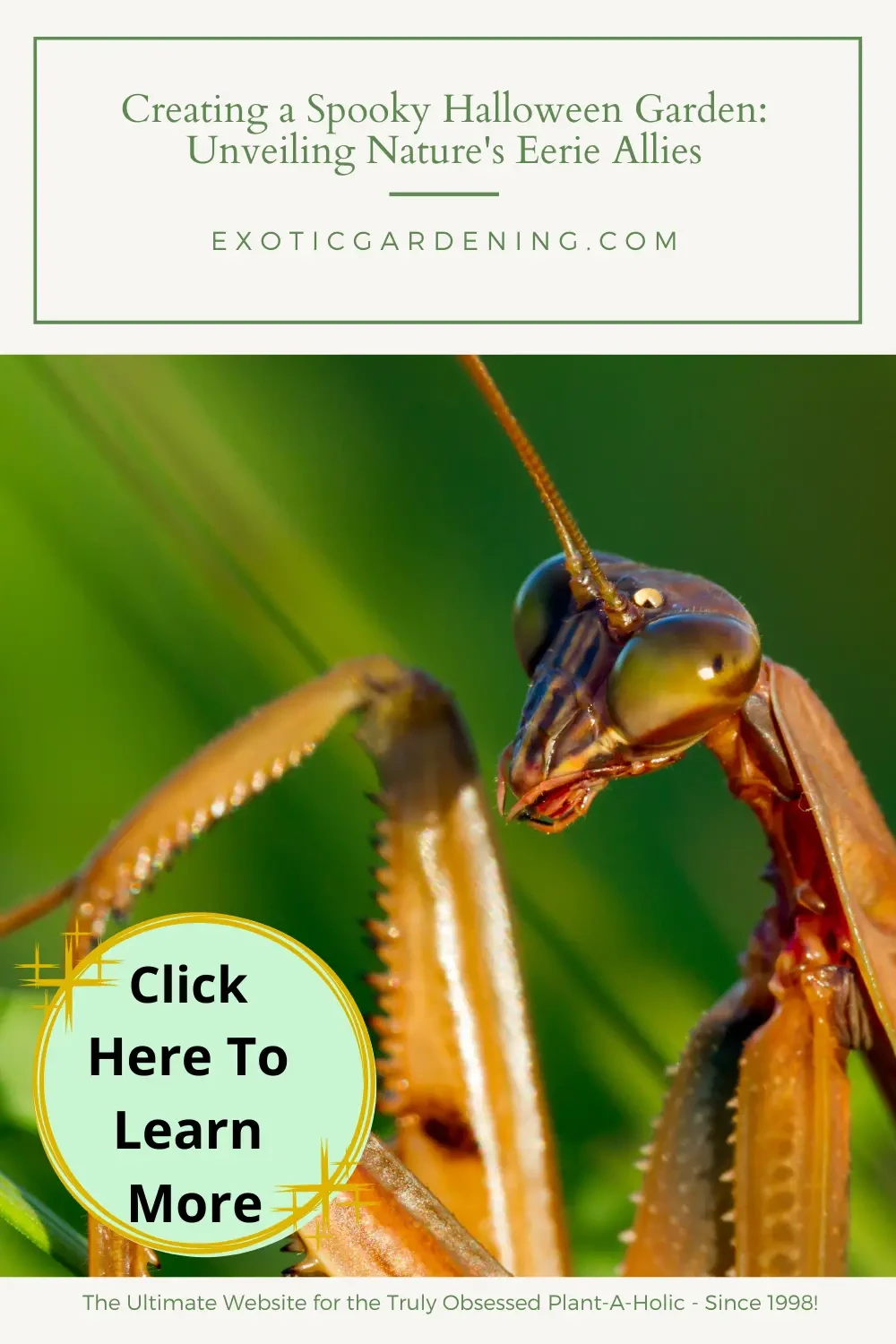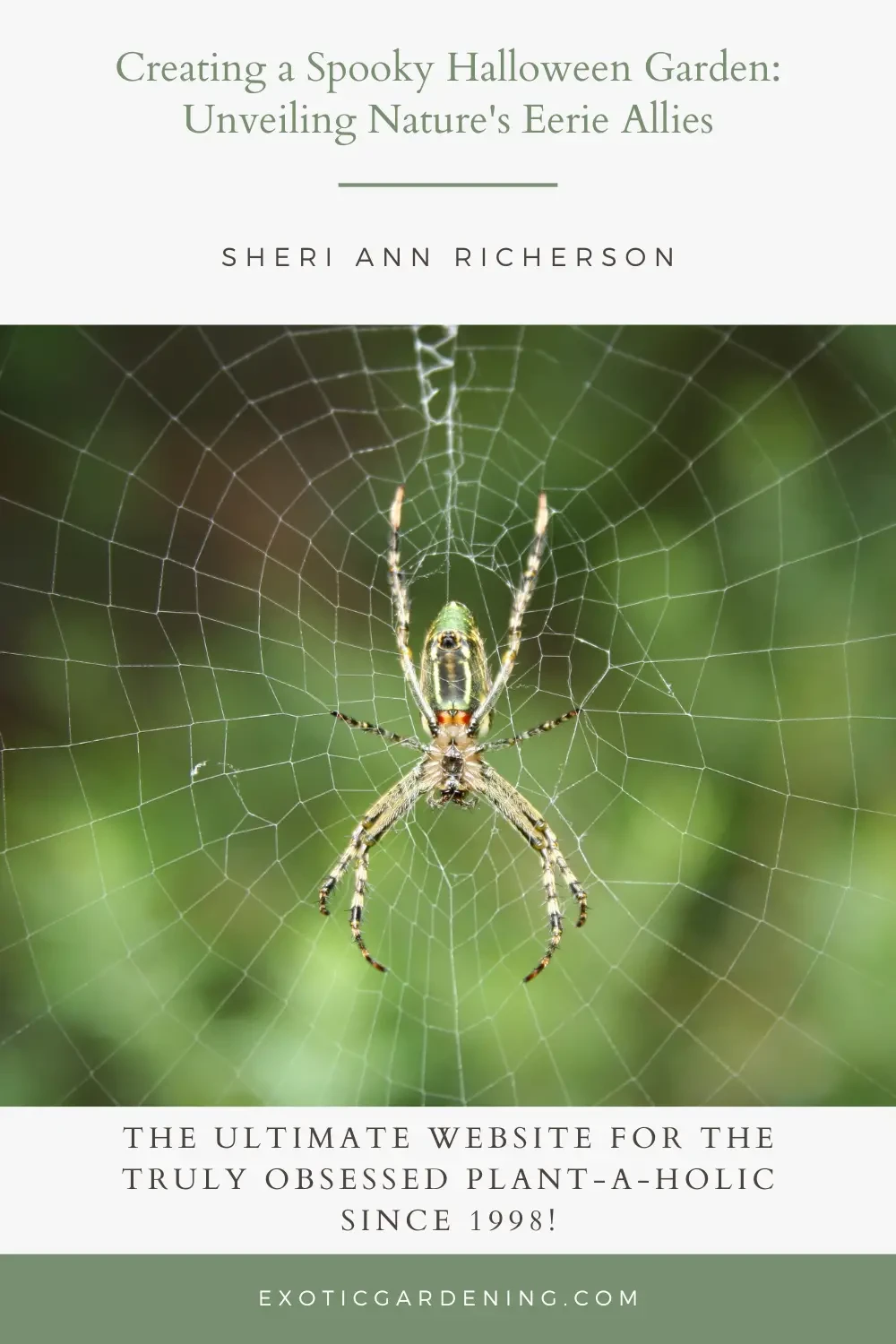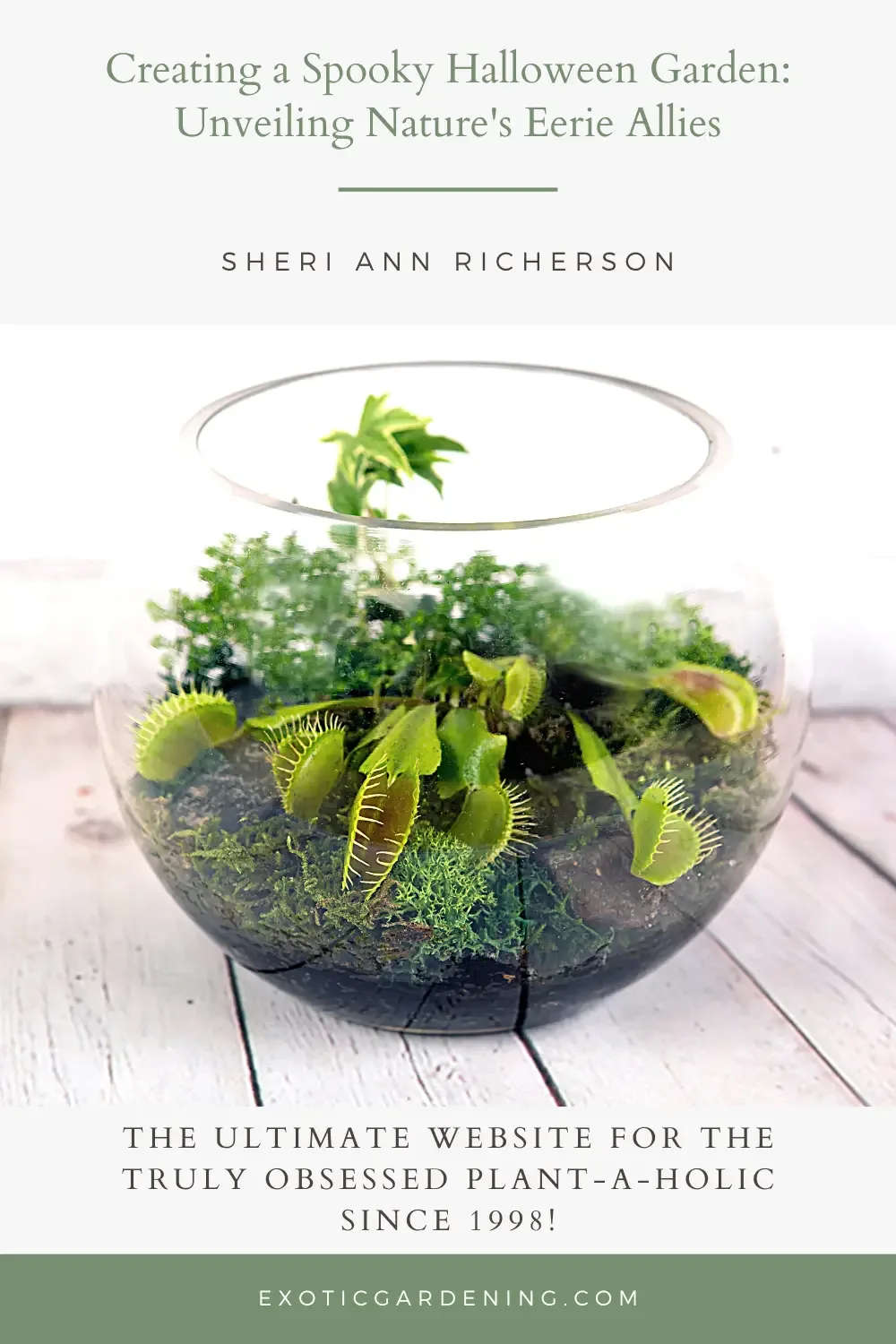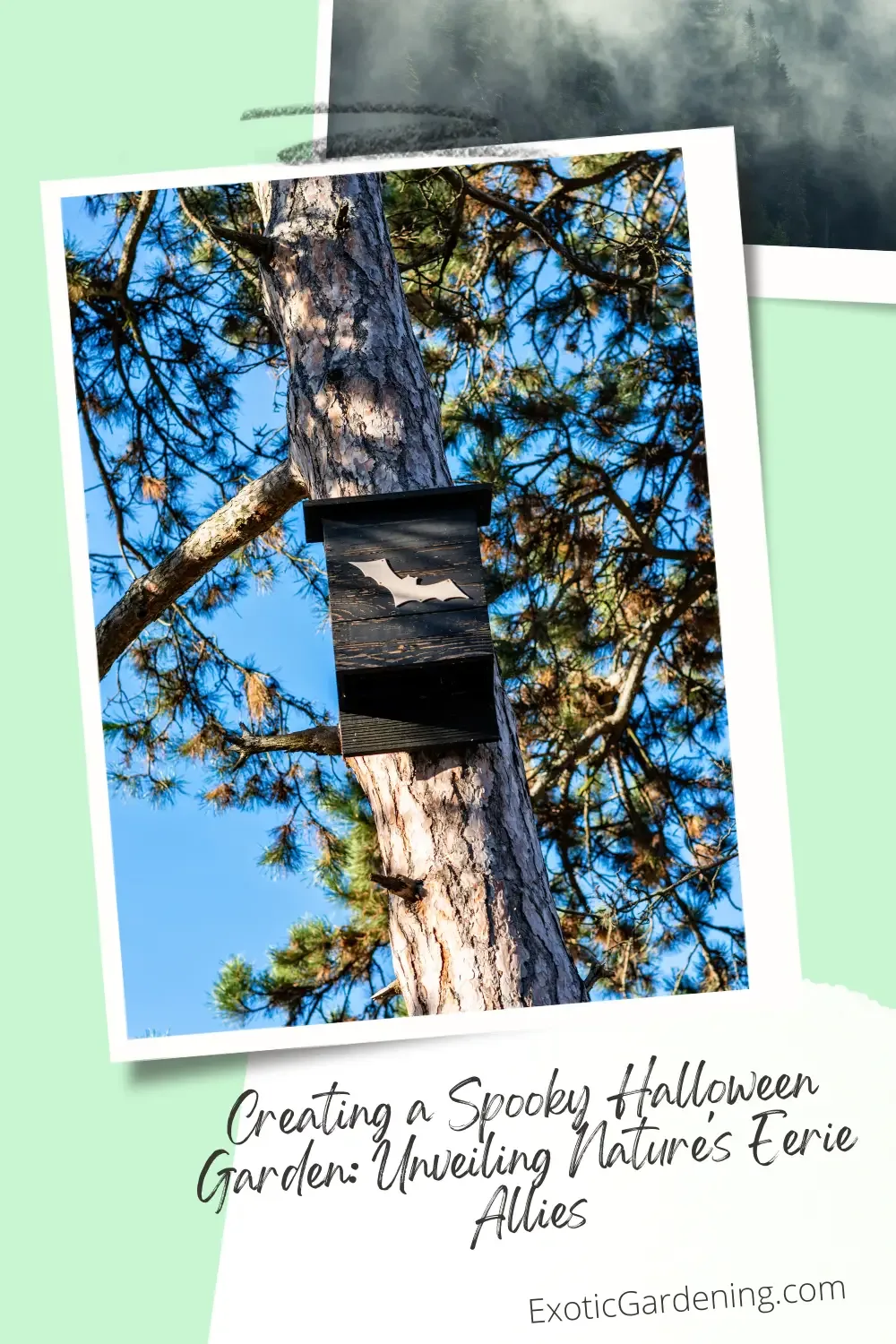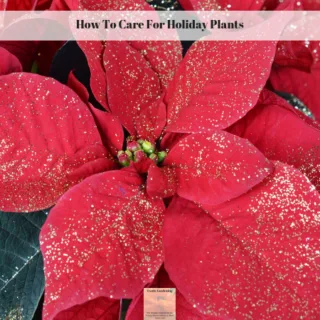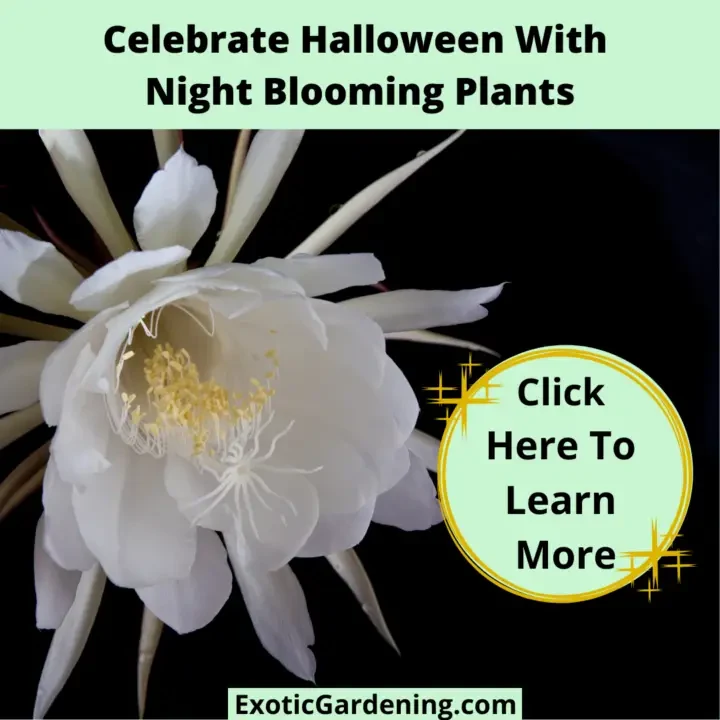Halloween is all about embracing the spooky and mysterious, and what better way to do that than by creating a garden that's teeming with eerie insects, spiders, and other creepy-crawlies?
In this blog post, we'll embark on a journey through the world of fascinating and sometimes spine-chilling creatures that can actually benefit your spooky Halloween garden.
From the enigmatic Praying Mantis to the mysterious Venus Flytrap, we'll uncover the secrets of these natural Halloween decorations and how to attract them to your garden while maintaining that eerie Halloween atmosphere.
The Praying Mantis: Guardians of the Garden
Let's start with the Praying Mantis.
These creatures are like something straight out of a horror movie with their long, spindly legs and sharp mandibles.
But don't be fooled by their appearance; these insects are the guardians of your garden.
They're voracious predators, feasting on other insects that might be damaging your plants.
Unlocking the Mysteries of the Praying Mantis: Life Cycle and Hunting Skills
The Praying Mantis, with its otherworldly appearance and mesmerizing demeanor, is a creature that holds many secrets waiting to be unveiled.
To truly appreciate these garden guardians, we need to understand their remarkable life cycle and hunting techniques.
The Fascinating Life Cycle: A Story of Transformation
The life of a Praying Mantis is a narrative of transformation that could rival any Halloween tale.
It begins with the laying of egg cases, also known as oothecae, in the fall.
These curious structures resemble tiny Gothic cathedrals or intricate sculptures.
Inside each ootheca, dozens of tiny mantis eggs lie in wait, protected from the harsh winter.
As spring arrives, the mantis nymphs emerge from their egg cases, resembling miniature versions of their adult forms.
What's astonishing is that these nymphs are already skilled hunters, displaying their characteristic patience and precision at a young age.
As they grow, they molt several times, shedding their exoskeletons and gradually maturing into adults.
Hunting Techniques: Stealth and Precision
Now, let's talk about the Praying Mantis's hunting prowess, which is truly a sight to behold.
These seemingly tranquil creatures are, in fact, highly skilled predators.
Their long, spiky forelimbs, which give them their name, are equipped with sharp spines, resembling formidable weapons.
The mantis sits in perfect stillness, its body often camouflaged among leaves or flowers, waiting patiently for unsuspecting prey to come within striking distance.
When the moment is right, they strike with lightning speed, using those spiny forelimbs to immobilize their victim.
But there's more to their hunting strategy than just speed and precision.
Some mantis species have developed mimicry as part of their hunting repertoire.
They can mimic the appearance of a flower or a leaf, luring curious insects into their clutches.
It's a testament to the incredible diversity of survival strategies found in the insect world.
The Praying Mantis, Nature's Stealthy Guardian
In conclusion, the Praying Mantis is more than just a garden oddity – it's a stealthy guardian, silently patrolling your plants and keeping harmful insects at bay.
Understanding their life cycle, from the mysterious egg cases to the patient nymphs and skilled adults, adds depth to our appreciation of these remarkable insects.
Their hunting techniques, characterized by precision and mimicry, showcase the ingenuity of nature's design.
So, the next time you spot a Praying Mantis in your spooky Halloween garden, take a moment to marvel at the secrets it holds and the vital role it plays in maintaining the balance of your garden's ecosystem.
These enigmatic creatures are more than meets the eye, making them the perfect addition to your eerie outdoor haven.
Spiders: Nature's Web Weavers
Now, let's talk about spiders – the ultimate Halloween icons.
While they might send shivers down your spine, they play a crucial role in garden pest control.
Let's delve into the captivating world of garden orb-weavers, those masterful silk-spinning artists, and discover how their intricate webs can serve as both nature's engineering marvels and inspiration for DIY Halloween decorations.
Garden Orb-Weavers: Architects of Enchanting Webs
Garden orb-weavers, with their intricate, finely-woven webs, are a mesmerizing sight to behold in any garden.
These skilled arachnids belong to the Araneidae family, and their distinctive webs, often shaped like spirals or orbs, are truly works of art.
But what makes these webs even more fascinating is their dual function.
Silk as a Trap and Inspiration: Nature's Engineering and Artistry
While the primary purpose of these elaborate webs is to catch prey, the silk itself is a testament to nature's engineering brilliance.
Orb-weavers produce several types of silk, each tailored for specific tasks, from structural support to wrapping captured prey.
The silk used for the web's spiral is particularly sticky, designed to ensnare unsuspecting insects that venture too close.
Now, here's where it gets even more intriguing.
The very silk that captures prey in your garden can also serve as inspiration for DIY Halloween decorations.
Imagine crafting your own eerie and enchanting Halloween decor using materials inspired by these natural marvels.
DIY Halloween Decor: Weaving Your Own Magic
Drawing inspiration from garden orb-weaver webs, you can create stunning and spooky decorations that will delight and mystify your Halloween visitors.
Here are a few ideas to spark your creativity:
1. Faux Spider Webs: Craft delicate faux spider webs using white cotton thread or thin yarn. Hang them strategically around your garden, and when the breeze catches them, they'll shimmer and glisten like the real thing.
2. Glowing Spider Silk: Incorporate glow-in-the-dark paint or thread into your DIY spider webs for an eerie nighttime effect. Imagine the enchanting sight of your garden coming alive with glowing webs under the moonlight.
3. Spider Silhouettes: Cut out spider silhouettes from black paper or cardboard and attach them to your DIY webs. They'll appear to be lurking predators, adding an extra layer of spookiness to your Halloween garden.
4. Web-Inspired Lanterns: Create lanterns with web-like patterns using simple materials like mason jars, white glue, and black paint. Place battery-operated tea lights inside for an eerie glow.
5. Spider Egg Sacks: Craft miniature spider egg sacks using white fabric or cotton balls. Hang them strategically around your garden, making it look like your spiders are preparing for their Halloween hatch.
Webs of Wonder and DIY Delights
In summary, garden orb-weavers are true artists of nature, spinning intricate webs that serve as both traps for prey and inspiration for DIY Halloween decorations.
Their silk, a marvel of engineering, can be transformed into enchanting decorations that add a touch of the eerie to your garden.
So, let your creativity flow and weave your own magic, celebrating the beauty and artistry of these silk-spinning garden architects in your Halloween decor.
Your spooky garden will be a sight to remember, a testament to the wonders of both nature and human imagination.
Eerie Plants: Venus Flytrap and Pitcher Plants
No Halloween garden is complete without eerie plants like the Venus Flytrap and Pitcher Plants.
Venus Flytrap: The Snap of Deception
The Venus Flytrap, with its iconic jaw-like leaves, is a master of deception and speed when it comes to capturing prey.
- Luring: The trap of a Venus Flytrap looks like an open jaw adorned with spiky teeth. On the inner surface of these leaves, there are tiny, sensitive trigger hairs. When an insect, like a fly, lands on the trap and brushes against these trigger hairs, it's a trigger for the plant itself.
- Trapping: Once the trigger hairs are touched, the trap snaps shut in a fraction of a second, imprisoning the unsuspecting insect. It's like a lightning-fast bear trap for bugs. The trap closes with such force that it's nearly impossible for the insect to escape.
- Digestion: After capturing its prey, the Venus Flytrap secretes digestive enzymes to break down the insect's soft tissues. This process can take several days. Once digestion is complete, the trap reopens, revealing the indigestible parts of the prey, like the exoskeleton, which eventually gets washed away by rain or blown away by the wind.
Pitcher Plants: The Pitfall Predators
Pitcher Plants, on the other hand, employ a different strategy, luring insects into a deadly pitfall.
- Luring: The leaves of Pitcher Plants are shaped like deep, tubular pitchers, often filled with a liquid. The rim of the pitcher is adorned with nectar glands that secrete sweet nectar, tempting insects with the promise of a sugary meal.
- Trapping: As insects are drawn to the nectar, they land on the slippery rim of the pitcher. The surface is so smooth that they lose their grip and fall into the liquid-filled trap below.
- Digestion: Once inside the pitcher, the insect is submerged in digestive enzymes. These enzymes break down the insect's body, turning it into a nutrient-rich soup that the plant can absorb. Some species of Pitcher Plants even have specialized structures, like hairs pointing downward, to prevent insects from crawling back out.
Adaptations for Survival
Both Venus Flytraps and Pitcher Plants have evolved these carnivorous adaptations because they often grow in nutrient-poor soils.
By capturing and digesting insects, they supplement their diet with essential nutrients like nitrogen and phosphorus.
It's important to note that these plants don't actively seek out prey; they rely on their traps and the attraction of nectar to do the work for them.
While they may seem ruthless, they are simply following their natural instincts and adapting to their challenging environments.
In your spooky Halloween garden, these captivating carnivorous plants not only add an eerie charm but also serve as a reminder of the intricate and often surprising ways that nature has evolved to thrive in diverse ecosystems.
Caring for Carnivorous Wonders: Venus Flytrap and Pitcher Plants
Venus Flytrap and Pitcher Plants are not your everyday garden companions, but they can add an otherworldly charm to your spooky Halloween garden.
To help these carnivorous wonders thrive, here are some care tips:
1. Choosing the Right Soil: Both Venus Flytrap and Pitcher Plants prefer nutrient-poor soil. You can create a suitable mix by combining peat moss and perlite. Avoid using regular potting soil, as it's too rich in nutrients for these unique plants.
2. Water Quality: These plants are sensitive to minerals and chemicals found in tap water. Use distilled water, rainwater, or purified water to keep them happy and healthy. Never use water that has passed through a water softener.
3. Humidity and Lighting: Venus Flytraps and Pitcher Plants are native to humid, sunny habitats. Mimic their natural conditions by providing bright, indirect sunlight and maintaining high humidity levels. Placing them near a tray of water or using a humidifier can help achieve the right humidity.
4. Feeding: Contrary to popular belief, these plants don't require a constant diet of insects. They can catch their own prey. However, if you want to feed them, offer small live insects like flies, ants, or tiny crickets once a month during the growing season (spring and summer).
5. Winter Dormancy: During the winter months, Venus Flytraps and Pitcher Plants undergo a period of dormancy. Reduce watering and provide cooler temperatures (around 35-45°F or 2-7°C) to allow them to rest. Don't worry if their leaves turn brown; this is a natural part of their dormancy cycle.
Incorporating Carnivorous Charm into Your Spooky Garden Theme
Now that you know how to care for these fascinating plants, let's explore creative ways to showcase them in your Halloween garden:
1. Macabre Terrariums: Create eerie terrariums using clear glass containers. Add a layer of sphagnum moss as the base and plant your Venus Flytraps or Pitcher Plants. Decorate with small Halloween figurines, miniature tombstones, and even tiny skeletons for a spooky effect.
2. Centerpiece of Carnivorous Delight: For your Halloween gatherings, consider using Venus Flytraps or Pitcher Plants as centerpieces. Place them in decorative pots or containers and surround them with dried moss, faux cobwebs, and miniature creepy-crawlies to set the mood.
3. Dark and Mysterious Arrangements: Arrange your carnivorous plants alongside dark-colored flowers like black petunias or deep purple pansies for a striking contrast. This combination will lend a mysterious and enchanting ambiance to your garden.
4. Bewitching Window Displays: If you have windows overlooking your garden, position your Venus Flytraps or Pitcher Plants on the windowsill. When illuminated from inside during the evening, they'll create an eerie and captivating spectacle for passersby.
Carnivorous Curiosities for Halloween Magic
In conclusion, Venus Flytrap and Pitcher Plants are not only intriguing specimens but also perfect additions to your spooky Halloween garden theme.
By following these care tips and getting creative with their display, you can infuse your garden with an air of carnivorous curiosity that complements the Halloween season beautifully.
So, let your imagination run wild, and let these unique plants become the stars of your Halloween garden.
They're sure to enchant and captivate all who dare to venture into your carnivorous realm.
Creating the Spooky Atmosphere
Now, let's shift our focus to creating that eerie Halloween ambiance.
When crafting a spooky Halloween garden, the right lighting and mist can work in harmony to transform your outdoor space into an enchanting and mysterious realm.
Flickering Candles and Eerie Lanterns
Begin by strategically placing flickering candles and eerie lanterns throughout your garden.
These gentle, dancing flames cast eerie, shifting shadows, creating an enchanting atmosphere.
To add an extra layer of mystique, consider using battery-operated LED candles or lanterns.
This ensures that your garden remains safe from fire hazards while achieving the desired eerie effect.
Hauntingly Beautiful Dark-Colored Flowers: Black Petunias and Beyond
To elevate the Halloween theme, incorporate dark-colored flowers like black petunias or black calla lilies into your garden.
These blooms exude an air of mystique and enchantment, making them the perfect choice for a spooky garden ambiance.
In addition to petunias, explore other dark-hued floral varieties such as deep purple pansies, or velvety black roses.
These dark blooms will thrive in the hauntingly beautiful atmosphere you're creating.
While not normally dark colored, there are a variety of night blooming plants that would also work well in a Halloween garden.
Misters and Pond Enhancements: Adding an Ethereal Touch
Now, let's introduce misters, including those that sit on top of pond water, to enhance the eerie atmosphere.
These misters can create an ethereal, fog-like effect that adds an extra layer of enchantment to your Halloween garden.
Here's how to incorporate them:
- Floating Misters on Ponds: If you have a pond in your garden, consider adding floating misters on the water's surface. These misters emit a fine, gentle fog that hovers over the pond, creating a hauntingly beautiful ambiance. Combined with the right lighting, this mist will add an ethereal touch to your garden.
- Ground-Level Mist Effects: For gardens without ponds, ground-level misters can be strategically placed among your dark-colored flowers and eerie garden decorations. The mist will rise through the foliage, enveloping your garden in a magical fog, perfect for Halloween.
DIY Projects for Ghostly Garden Decorations
Complement the misty ambiance with DIY ghostly garden decorations.
Here are some ideas to consider:
- Tombstone-Inspired Plant Markers: Craft tombstone-inspired plant markers using weathered wood or stone. Personalize them with eerie inscriptions or the names of your garden plants. These markers not only serve a practical purpose but also contribute to the overall Halloween theme.
- Sinister Scarecrows: Put a sinister twist on traditional scarecrows by crafting your own eerie garden guardians. Use old clothing, straw, and a dash of imagination to create scarecrows with ghostly masks and tattered clothing. These eerie sentinels will stand watch over your garden, adding an element of surprise for visitors.
- Ghostly Garden Ornaments: Explore DIY projects for crafting ghostly garden ornaments. Think of ethereal, spectral figures that seem to materialize amidst the foliage. With some translucent fabric, wire, and LED lights, you can create spectral apparitions that enchant your garden after dark.
A Garden Enchanted by Halloween Magic and Mist
In conclusion, with the right lighting, dark-colored or night blooming flowers, misters, and DIY projects for ghostly garden decorations, you can transform your garden into an enchanting realm of Halloween magic and mist.
The interplay of light and shadow, the mysterious allure of dark blooms, and the ethereal mist will captivate visitors and leave them spellbound.
So, embrace the art of garden enchantment this Halloween, and let your imagination conjure a spooky haven that celebrates the season with flair, enhanced by the ghostly touch of mist.
Designing Habitats: Bug Hotels and Bat Boxes
In your quest to embrace the spooky side of nature in your garden, consider constructing bug hotels and installing bat boxes.
These additions serve a dual purpose, providing shelter for fascinating creatures while adding an extra layer of Halloween intrigue.
Bug Hotels: Retreats for Eerie Guests
Bug hotels, also known as insect hotels or insect houses, are like miniature haunted mansions for beneficial bugs.
These structures offer a variety of nooks, crannies, and materials that attract and provide shelter for a diverse range of insects and spiders.
Benefits of Bug Hotels:
- Pollinator Paradise: Bug hotels attract pollinators like solitary bees and butterflies, which are essential for garden biodiversity and the pollination of your plants, including those dark-colored flowers like black petunias.
- Natural Pest Control: Some insects that find refuge in bug hotels, such as ladybugs and predatory beetles, are natural predators of garden pests. They help maintain a healthy balance in your garden by keeping harmful insects in check.
- Educational Value: Bug hotels offer a wonderful opportunity for learning and observation. Encourage children and adults alike to explore these structures, observe the insect residents, and appreciate the role they play in your garden ecosystem.
Bat Boxes: Guardians of the Night Sky
Bats, those mysterious and often misunderstood creatures of the night, can add a touch of spookiness to your garden while serving as valuable allies in pest control.
Benefits of Bat Boxes:
- Nocturnal Pest Control: Bats are voracious insect-eaters, and many species are active during the night. By installing bat boxes in your garden, you invite these winged predators to help control nighttime insect pests like mosquitoes and moths.
- Eerie Ambiance: The presence of bats flitting through the night sky adds an unmistakable element of spookiness to your Halloween garden. Their shadowy silhouettes and erratic flight patterns enhance the eerie atmosphere.
- Conservation: Bats are facing threats in many parts of the world. By providing them with bat boxes, you contribute to their conservation and support their vital role in maintaining a balanced ecosystem.
Bug Hotels and Bat Boxes – Eerie Havens for Garden Guardians
In conclusion, bug hotels and bat boxes are more than just garden decorations; they are havens for beneficial insects, spiders, and bats that add depth to your Halloween garden's ambiance.
Bug hotels promote biodiversity and natural pest control, while bat boxes introduce an element of mystery and contribute to nocturnal insect control.
By incorporating these structures into your garden, you not only enhance the spooky allure of your outdoor space but also actively participate in the conservation of these intriguing and often overlooked creatures.
So, let your bug hotels and bat boxes be the silent guardians of your Halloween garden, ensuring that the eerie magic of nature thrives year-round.
Gardening with a Twist: Pumpkin Patches and Witch's Gardens
Halloween and pumpkins go hand in hand, and there's nothing quite like the magic of growing your own pumpkin patch.
Growing Your Pumpkin Patch: Tips for Success
- Choose the Right Varieties: Select pumpkin varieties that are suited to your region and garden size. Whether it's classic Jack-o'-lantern pumpkins or smaller decorative ones, choose those that thrive in your climate.
- Prepare the Soil: Pumpkins love well-draining soil rich in organic matter. Ensure your garden bed is well-prepared with compost or well-rotted manure. Plant your pumpkin seeds or seedlings in mounds to improve drainage.
- Give Them Space: Pumpkins are notorious for their expansive vines. Space your plants adequately to allow room for growth and proper airflow. This prevents diseases and ensures healthy pumpkins.
- Water Wisely: Keep the soil consistently moist, but avoid waterlogged conditions. Watering at the base of the plant, rather than overhead, helps prevent fungal issues.
Jack-o'-Lantern Carving: Unleash Your Creativity
- Choose Your Canvas: Select a perfectly ripe pumpkin with a flat bottom for stability. Make sure it's free of bruises or soft spots.
- Plan Your Design: Sketch out your Jack-o'-lantern design beforehand. There are countless templates available online, or you can create your own spooky or whimsical patterns.
- Carving Techniques: Use pumpkin carving tools or a serrated knife to cut out your design. Remember to work carefully, especially if involving children. And don't forget to save the pumpkin seeds for roasting (read this post to learn more)!
- Illuminate the Night: Place a tea light or battery-operated candle inside your carved pumpkin. The flickering light will cast eerie shadows and create a magical Halloween atmosphere.
Witch's Garden: Enchanting Herbs for Your Garden
To add an extra layer of enchantment to your Halloween garden, consider creating a Witch's Garden.
This garden features magical and medicinal herbs that have long been associated with witches and folklore.
- Magical and Medicinal Herbs: Explore the world of herbs like rosemary, lavender, sage, and thyme. These herbs have a rich history in herbalism, folklore, and magic. Rosemary, for example, is associated with protection and remembrance, while lavender symbolizes tranquility and purification.
- Designing Your Witch's Garden: Plant these herbs in clusters or rows, creating a dedicated section of your garden with decorative markers. You can also incorporate whimsical and witchy garden decor, such as cauldron-like pots or broomstick-shaped trellises.
Celebrating Halloween's Bounty in Your Garden
In conclusion, Halloween and your garden are a perfect match, with pumpkins taking center stage.
Whether you're growing your own pumpkin patch, carving Jack-o'-lanterns, or exploring the world of magical and medicinal herbs in a Witch's Garden, you're celebrating the bounty of the season in the most enchanting way.
So, embrace the traditions of Halloween with open arms, infusing your garden with the spirit of the season.
And remember, in your garden, magic is real, and every pumpkin, every herb, and every carved Jack-o'-lantern tells a story of Halloween's enduring enchantment.
Embrace the Spooky Side of Nature
In the enchanting tapestry of your garden, you've woven the threads of eerie insects, spooky spiders, carnivorous plants, flickering candles, and the magic of Halloween.
It's a garden that celebrates the mysterious and the enchanting, where nature's peculiarities take center stage.
As we conclude this journey through the realm of Halloween horticulture, let's take a moment to appreciate the beauty and wonder of embracing the spooky side of nature.
Your garden, transformed into a haven for eerie creatures and enchanting decor, becomes a stage for the captivating dance of life and mystery.
Share Your Halloween Garden Tales
We invite you to share your own Halloween gardening experiences and ideas in the comments section below.
Did you encounter a particularly fascinating insect or spider in your garden?
Have you crafted DIY decorations that gave your garden a spine-tingling charm?
Your stories and insights can inspire others to embark on their own journey into the world of spooky gardening.
Creating a Healthier and Balanced Ecosystem
By welcoming these creepy-crawlies and embracing the eerie ambiance in your outdoor space, you're doing more than just conjuring a captivating Halloween atmosphere.
You're contributing to a healthier and more balanced ecosystem.
The insects and spiders you've invited are nature's stewards, playing crucial roles in pollination, pest control, and nutrient cycling.
In this season of change, when the days grow shorter and the shadows lengthen, your garden becomes a testament to the magic of nature.
It's a reminder that there is beauty in the mysterious, wonder in the eerie, and enchantment in the unknown.
So, as you step into your garden on Halloween night, surrounded by the flickering candles, the dark blooms, and the eerie inhabitants, know that you've created a space where the boundaries between the natural and the supernatural blur.
It's a space where you've embraced the spooky side of nature, and in doing so, you've unlocked the true essence of Halloween.
Happy gardening, and may your Halloween garden always be a place of enchantment, where the mysterious and the magical come to life.
Unlock the Secrets of Your Spooky Halloween Garden with These FAQs
Q. How can I attract beneficial insects to my spooky Halloween garden?
A. Plant nectar-rich flowers like marigolds, zinnias, and black-eyed Susans to attract pollinators and beneficial insects.
Q. Are there any eco-friendly ways to light up my Halloween garden?
A. Yes, consider using solar-powered LED lights or battery-operated LED candles for an eco-friendly and spooky ambiance.
Q. Can I grow pumpkins in a small garden?
A. Absolutely! Choose smaller pumpkin varieties like 'Jack Be Little' or 'Baby Boo' that are perfect for small spaces.
Q. What herbs are commonly associated with witch's gardens?
A. Herbs like rosemary, lavender, sage, and thyme are often included in witch's gardens due to their historical and magical significance.
Q. Are there any eco-friendly alternatives to traditional plastic Halloween decorations?
A. Yes, consider using natural materials like dried leaves, gourds, and cornstalks for decorations that are both spooky and sustainable.
Q. What's the best way to create a foggy effect in my garden?
A. You can use misters or fog machines to create a mysterious foggy ambiance in your Halloween garden.
Q. How can I ensure that my carnivorous plants thrive in my garden?
A. Provide them with distilled water, maintain proper humidity levels, and choose a suitable location with filtered sunlight.
Q. What's the benefit of having a bat box in my garden?
A. Bat boxes provide shelter for bats, which help control nighttime insect pests like mosquitoes.
Q. How do I attract bats to my bat box?
A. Plant night-blooming flowers like moonflowers and evening primroses to attract nocturnal insects, which, in turn, attract bats.
Q. Can I grow Venus Flytraps and Pitcher Plants in the same container?
A. It's best to grow them separately because they have different care requirements and may compete for resources.
Q. Are all spiders in my garden harmful?
A. No, many garden spiders are harmless and beneficial for pest control. Only a few species pose potential harm to humans.
Q. How do I safely handle spiders in my garden?
A. Use a glass and piece of paper to gently catch and release spiders outside if you're uncomfortable with them in your living space.
Q. Are bug hotels suitable for all types of insects?
A. Bug hotels cater to a wide range of beneficial insects and spiders, providing shelter and nesting sites.
Q. Can I use pumpkins for more than just carving on Halloween?
A. Absolutely! Pumpkins are versatile; you can cook with them, use them for seasonal decor, and roast their seeds for snacks.
Q. How do I create a witch's garden design that's visually appealing?
A. Experiment with different plant heights, textures, and colors, and consider adding whimsical garden decor to enhance the theme.
Q. What's the best way to preserve the eerie atmosphere of my Halloween garden throughout the season?
A. Regularly maintain your decorations, replace candles or LED lights as needed, and keep your plants healthy and vibrant.
Q. Are there any eco-friendly pest control methods for a spooky garden?
A. Yes, you can encourage natural predators like ladybugs and lacewings or use organic pest control methods like neem oil.
Q. How can I involve kids in creating a Halloween-themed garden?
A. Get kids excited by letting them choose spooky decorations, paint rocks as ghostly ornaments, or help with pumpkin carving.
Q. Can I host a Halloween-themed garden party?
A. Absolutely! Invite friends and family for a night of eerie enchantment with a garden party, complete with ghostly decorations and spooky treats.
Holiday Plants
How To Care For Holiday Plants
Check out this plant care guide to learn how to care for holiday plants such as the Poinsettia, the Thanksgiving and Christmas Cactus.
Create A Festive Christmas Terrarium
Incorporate plants into your holiday decor this year by learning how to create a festive Christmas terrarium using a rose Poinsettia.
Celebrate Halloween With Night Blooming Plants
A cool way to decorate and celebrate Halloween is with night blooming plants! Create a spooky garden that glows in the dark this year!


